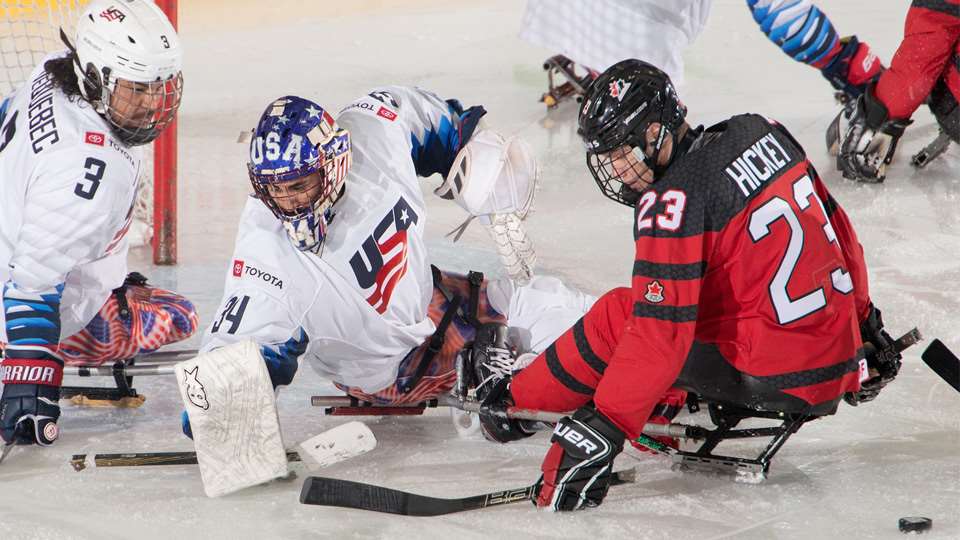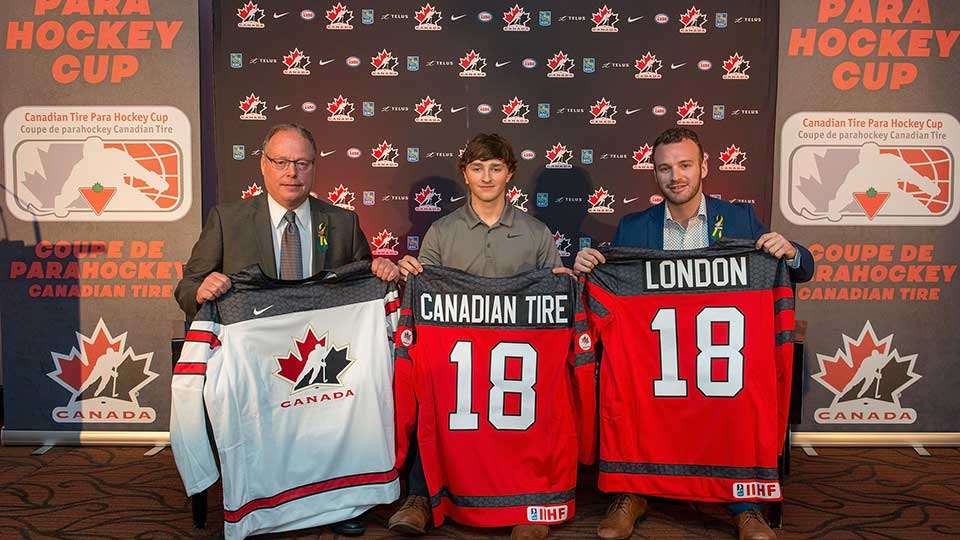

Stepping up to the challenge
His roster spot on the line, James Gemmell rose to the occasion to return to Canada’s National Sledge Team

James Gemmell knows what it’s like to be cut from Canada’s National Sledge Team. After debuting with the team at the 2008 World Sledge Hockey Challenge – held, coincidentally, in Charlottetown, P.E.I. – subsequent appearances were few and far between for a couple of seasons.
“I was new to the sport at that point,” he says. “You get with these national team players and they’re all so fast and skilled, so it was tough to adapt and learn what I needed to in order to play at the international level.”
Gemmell did adjust his game and for the last six years has been a steady presence on the team’s blue-line.
But by the end of the 2015-16 season he found himself in an uncomfortably familiar situation. The game had gotten faster, and just like eight years ago, Gemmell was at risk of being left behind.
“We told him the way this team is moving with speed and puck skills, you’re going to have to do a lot of work this summer in order to crack the line-up next year,” says Ken Babey, head coach of Canada’s National Sledge Team. “It’s always been our thing to be honest and upfront and to give somebody a path if that’s the path they want to choose.”
Gemmell has no shortage of dedication to his sport. The sole member of Canada’s National Sledge Team to live in British Columbia, he often trains alone. But with no ice to practice on for nearly five months of the year in Quesnel, it can affect his training and conditioning. By Gemmell’s own admission he was carrying around more than he should.
“I’ve seen the way the game of sledge hockey has evolved since I started playing 10 years ago, and it’s not a game for guys with extra weight,” he says. “It’s not the game where they’re going to ask you to go out there and just throw big body checks anymore.”
Sledge hockey is now a finesse game, and the coaches challenged Gemmell to adapt to the changing times by getting leaning and stronger.
That started with a hand bike.
Gemmell rode up to 60 kilometres day, up to five days a week, in and around Quesnel. For all those hills he climbed up, the pounds stayed behind.
Twenty-two pounds later – and lighter – Gemmell is a new player.
“Coach was calling me ‘Slim Jim’ the first time he saw me,” says Gemmell. “As soon as I walked in everyone noticed right away and made comments on it, which makes you feel a lot more accomplished when people notice the second they see you that you’ve put in some work to help the team.”
He’s gone from being one of the slower players on the team to one of the fastest. His shot has improved, as have his puck-handling skills.
“There’s a guy who wants to be here and rose to the challenge,” says Babey. “It’s the whole reason you coach – you see the changes in people in a positive way. It makes you feel very proud and very honoured to be working with them as their coach.”
And the changes go below the surface, too.
“I’m a lot more confident,” says Gemmell. “Losing that weight and getting a bit more speed brought a lot of confidence to my game. I feel that out on the ice.”
What Gemmell wouldn’t allow himself to feel was what he did eight years ago. Lessons learned from those early cuts stayed with him. He knew what he would miss by not playing, and he wasn’t prepared to leave that part of his life behind.
“Kids grow up dreaming of playing for Team Canada, and I’ve been blessed with that opportunity,” says Gemmell, who has played 64 games and won eight gold medals for Canada’s National Sledge Team. Now 36, he’s the oldest player on the team. “I’m getting older and older and my career is getting shorter and shorter, so to have that taken away from me now, I’m not sure I would’ve been able to make it back.”
Instead, Gemmell has returned to Charlottetown, a renewed player back where it all began.
“I was over the top with excitement to be there but nervous,” he says. This week’s World Sledge Hockey Challenge marks his first trip to the city since then. “I’m excited to be back. I just want to play hockey. That’s all I want to do is go out and play the game. It’s what I love to do.”
For more information: |



 Matteo Pellizzari (left), Mitchell Garrett and Brendon Hurst.
Matteo Pellizzari (left), Mitchell Garrett and Brendon Hurst.
 Mitchell with his dad, Ken Garrett.
Mitchell with his dad, Ken Garrett. Corbyn Smith (left) and Mitchell Garrett celebrate after beating Czechia at the 2023 Para Hockey Cup.
Corbyn Smith (left) and Mitchell Garrett celebrate after beating Czechia at the 2023 Para Hockey Cup.


























